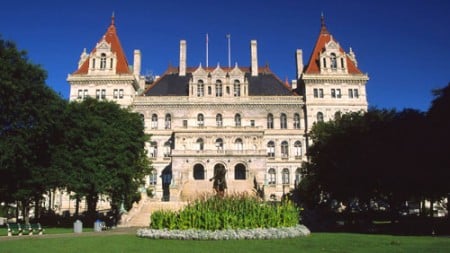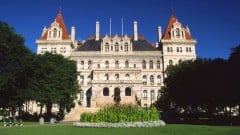Three clean water takeaways in the proposed state budgets

Photo Credit: iStock
View more images on our Flickr site

Riverkeeper is advocating for three key priorities in the state budget. If you want to stay up-to-date on how the budget negotiations in Albany might impact New York’s environment, please sign up to receive our email alerts.
New York State’s Assembly and Senate released their “one-house budgets” this week. Each house’s proposed budget presents the vision for what each chamber hopes will be included in a final budget due on April 1st, but the final state budget is ultimately negotiated by just three people: the Governor, Assembly Speaker, and the Majority Leader of the Senate. Here’s Riverkeeper’s “clean water takeaways” from the proposals from the Assembly and Senate (see here for what we found in the Governor’s proposal).
1. Plastic Bags. There’s good news and bad news. After the Governor released his proposal to simply place a ban on plastic bags and effectively switch the default consumer bag to paper we joined with environmental advocates to call on the legislature to enact a comprehensive solution: the BYOBag Act sponsored by Senator Todd Kaminsky and Assemblyman Steve Englebright.
The good news is that the Senate resolution called for a ban on plastic bags along with a critical fee on paper bags in their budget document. This is the gold standard approach that would ban the plastic bag and put a small fee on all other bags, which has been proven to increase reusable bag use (the ultimate goal). The bad news is that the Assembly left plastic bag legislation entirely out of their budget, missing an opportunity to put forward a statewide solution after they joined with the previous Senate and Governor Cuomo to overturn NYC’s plastic bag legislation last session. There’s still time for the Assembly to step up, please encourage your assemblymember to advocate for the Bring Your Own Bag Act (S95/A5753) in the final budget.
2. Building on the success of the 2017 Clean Water Infrastructure Act. In January the Governor announced his intention to double the state’s commitment to the Clean Water Infrastructure Act, with another $2.5 billion over the next five years. The Senate budget resolution calls for appropriating another $2.5 billion over a multi-year period and we are grateful for this commitment. Unfortunately, the Governor and Assembly proposals ultimately fell short, only allocating $500 million for the next fiscal year. A broad coalition of advocates has urged elected leaders to make the same commitment it did in 2017, when it authorized the first $2.5 billion in full.
As we frequently remind anyone who will listen, New York has an estimated $80 billion need for wastewater and drinking water infrastructure investments over the next 20 years ? the largest in the nation. Since 2015, when the state began its historic reinvestment in water infrastructure, $684 million in grants have been committed with even more dollars announced. The projects awarded thus far include fixing or upgrading aging wastewater treatment plants, replacing broken pipes and lead drinking water lines, and protecting drinking water sources through land acquisition. These projects are vital to the health of the Hudson River and its tributaries and residents. Help us continue to advocate for the full $2.5 billion in the final budget agreement, due April 1st.
3. $300 Million Environmental Protection Fund. The Senate and Assembly budgets both continue to fund the EPF at a historic $300 million, supporting the Hudson River Estuary Program, the Water Quality Improvement Program, source water protection planning, and waterfront revitalization programs. Also worth celebrating, the legislative budgets push back on a proposal in the Governor’s budget to raid EPF funds for agency staff, a measure widely opposed by the environmental community.
